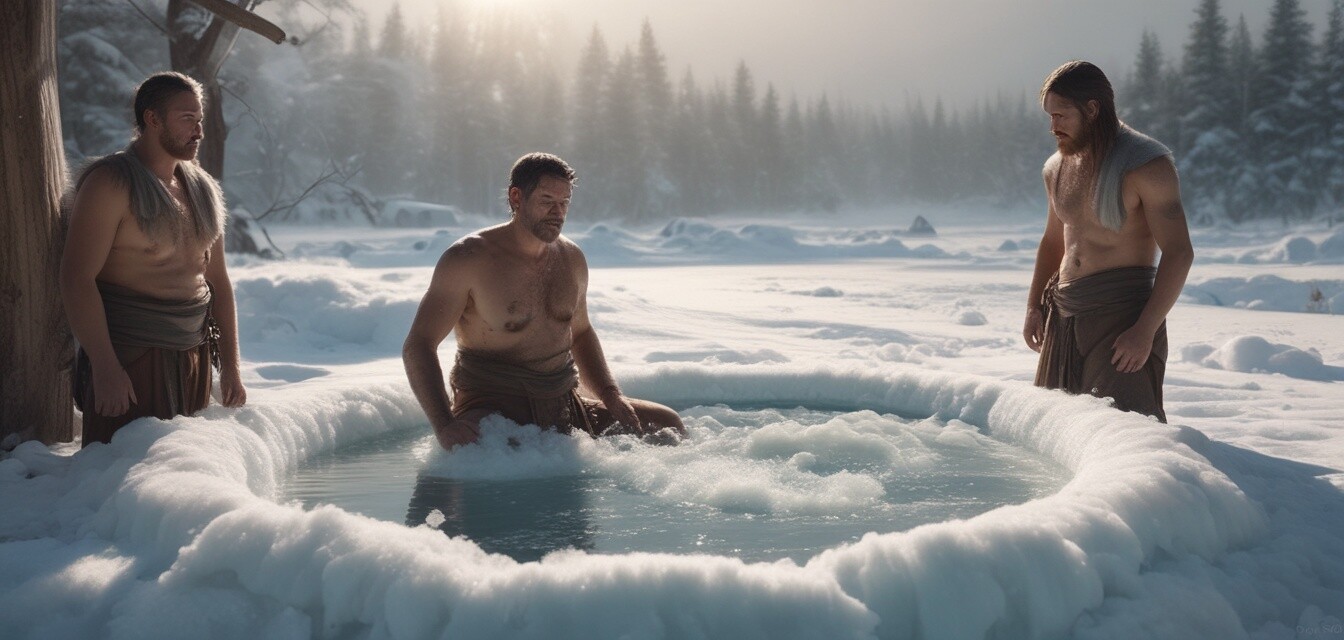
Ice Bathing in Culture: From Ancient to Modern Times
Key Takeaways
- Ice baths have been used in various cultures for centuries.
- Ancient civilizations believed in the healing properties of cold exposure.
- Modern ice bath techniques are influenced by traditional practices.
- Cultural significance varies but often relates to spiritual and physical recovery.
- Staying informed about techniques can enhance your DIY setup.
The practice of ice bathing is deeply rooted in human history, with various cultures discovering the benefits of cold exposure long before modern science confirmed these advantages. From the icy rivers of ancient civilizations to today’s sophisticated ice bath setups, this practice has evolved while retaining its essential purpose: recovery and rejuvenation. In this article, we will explore the cultural significance of ice bathing throughout history and how these traditions influence contemporary techniques.
The ancient origins of ice bathing
Ice bathing can be traced back to several ancient cultures, each harnessing cold water for its purported benefits. The use of icy waters was often intertwined with spirituality and health. Here are some notable ancient practices:
| Culture | Practice | Significance |
|---|---|---|
| Ancient Greece | Cold water baths | Believed to alleviate stress and promote physical recovery. |
| Ancient Rome | Frigidarium in baths | Used for cleansing and revitalizing the body. |
| Japan | Misogi | Spiritual purification ritual involving cold water. |
| Scandinavia | Sauna and ice plunge | Tradition for relaxation followed by invigorating cold exposure. |
These practices were not merely physical luxuries but essential parts of life that reinforced community bonding and personal well-being.
Ice bathing in traditional cultures
Various traditional cultures have utilized ice baths in unique ways. Here’s a closer look at how these traditional practices continue to shape modern techniques:
- Russian banya: The combination of sauna and cold plunge promotes circulation and recovery.
- Native American rituals: Certain tribes included cold river immersions as part of spiritual cleansing and healing.
- Chinese practices: Cold water is often used in conjunction with hot water therapies to balance body energy.
Modern ice bathing techniques influenced by tradition
Today’s ice bathing regimens have been heavily influenced by these historical practices. Modern techniques are often more structured and targeted towards specific objectives like athletic recovery and mental resilience. Here are some notable methods:
| Technique | Description | Influence |
|---|---|---|
| Cold water immersion | Submerging the body in cold water for a specific duration. | Inspired by ancient Greeks and Romans. |
| Contrast baths | Alternating between hot and cold water. | Derived from traditions of Russia and Scandinavia. |
| Cold showers | Short bursts of cold water exposure. | A simplified version of traditional practices. |
| Ice packs and wraps | Localized cooling for sore muscles. | Modern adaptation inspired by traditional methods. |
As people around the world embrace these modern techniques, there’s a growing understanding of the long-standing practices that have paved the way for today’s recovery methods.
Benefits of understanding cultural significance
Understanding the cultural and historical contexts of ice bathing can enhance your appreciation for the practice. Here’s why:
- It provides insight into the spiritual connections different cultures have with cold exposure.
- It helps in recognizing common elements in recovery techniques across societies.
- It inspires creativity in personal DIY setups, often incorporating elements from various traditions.
- It encourages a holistic view of wellness that combines physical and mental health practices.
Staying updated on trends
Ice bathing practices continue to evolve, and keeping abreast of the latest trends can enhance your own recovery setup. Check our News and Trends category for the freshest insights.
Tips for DIY ice bath setups
- Research historical practices that resonate with you.
- Consider the materials and designs used in different cultures.
- Don't hesitate to adapt techniques that suit your lifestyle.
- Stay safe and monitor your body's response to cold exposure.
Conclusion
The cultural significance of ice bathing is undeniable, rooted in centuries of tradition and practice. By understanding these historical contexts, you can better appreciate and enhance your personal recovery sessions. Whether you're looking to create your own DIY ice bath or simply deepen your knowledge, remember that these age-old practices have much to teach us today.
Pros
- Rich cultural heritage supports mental and physical rejuvenation.
- Research-backed techniques for better recovery.
- Accessibility to create DIY setups at home.
Cons
- May require equipment or space for setups.
- Colder climates can pose challenges for consistent usage.
- Potential discomfort for beginners not accustomed to cold exposure.
